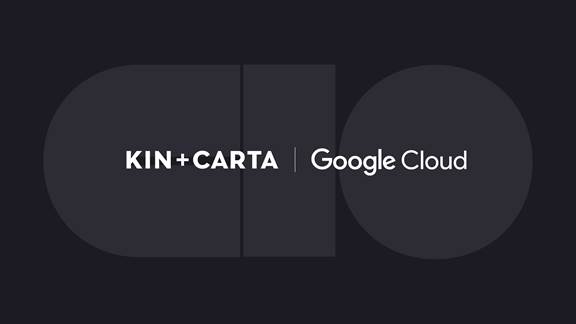Any executive who implemented what we now call Cloud 1.0 knows that the journey continues. As enterprises and vendors mastered data management in the cloud, the next horizon has been revealed. Cloud 2.0, resting on the foundation its predecessor built, moves business value beyond the IT function and plays a significant role in organizational transformation. This phase in cloud evolution fosters innovation that can expand market footprint, put employees into higher-value roles, and create a completely new process structure that enhances competitive advantage.
To facilitate executives in their journey to their Cloud 2.0 destinations, we recently hosted a CIO roundtable discussion with guest speaker Kelsey Hightower and host Mark Ardito. Roundtable participants, executives in different industries and at different points in the cloud journey, found common ground as well as high value in the discussions around four key topic areas.

Cloud 2.0: The mindset shift
For a lot of people, the first thing you have to do is just get to the cloud. That's it. But at the same time, I think that we are all here today so there are clear challenges; so companies like Kin + Carta are saying, "Look, let us figure out how you adapt and close the gap on the things you don't know how to do."
Kelsey Hightower Principal Engineer at Google Cloud
Going beyond lift and shift.
Kin + Carta typically sees a 2.5 increase in cost with lift and shift, mainly due to the added functionality needed that had been resident in the data center. Going to a cloud-native managed service sees around a 60% reduction in cost.
Though it is not the end goal, lift and shift might have a place in a Cloud 2.0 scenario. The key is the creation of a roadmap that lays out the full initiative in time. This lets the decision maker see the value of using lift and shift at a particular point—for example, significant cost or development time savings. This can be compared to moving immediately to the newer managed services.
Key Learning
Depending on the cost-value assessment, the plan may be to start with lift and shift to make progress, with a move to managed services later in the timeline.
Defining digital transformation.
The appetite for transformation is high among executives. However, when asked what that transformation looked like, what the company would look like on the other side, the same executives struggle to offer a clear answer.
A top request is to “make the new thing work the old way.” Too often when this is done, the reaction is “we’re not getting any value from the cloud.” Kelsey explained that the decision to digitally transform without exactly defining what that means is like buying a brand-new Boeing 777 and saying, “I just want to take it home. I’ll fly it myself.” The brand-new technology is purchased, but no one knows how to use it to make the transformation real.
Key Learning
The post-transformation state must be clearly defined up front in order to drive the right decisions and planning processes.
Thinking past technology.
Cloud 2.0 requires specific skill sets in the people working with it. While needed skills can be brought in via partners, the longer-term solution is to establish them in house. Motivating engineers and similar staff to learn new skills needs more than a vague “we’re going to transform” statement.
A winning approach is to bring “new” people from elsewhere in the company to the table to help think outside the usual pathways. Also, include a product manager (different from a project manager) who can connect the digital transformation dots to the customer or end user. This helps ensure that the result is what that customer or end user wants.
Key Learning
Tap “new” people from other parts of the company to participate in the initiative. Motivate engineers and similar staff to master new skills by sharing the goals and new functionality as well as getting their help to determine the path to get there. Assess the roles of most value to a Cloud 2.0 initiative and hire for them or locate the right employees.
Where and how to deploy third-party partners.
While third-party partners can be leveraged, there are certain roles (like the product manager mentioned above) that should be hired. This is especially true for small companies where that single internal expert can oversee partner teams and make quality control checks along the way.
Companies may find it difficult to hire the skills they need because of fierce competition for talent. An effective way to address this is to contract top talent through a partner and get your people trained up by working alongside them. At Kin + Carta, this is called Enablement. As a service, Enablement ensures that once Kin + Carta has completed their engagement with a client, their in-house staff will be upskilled and trained to keep things going.
Key Learning
Use third-party partners to bring in top quality needed but hard-to-hire skills. Concentrate on hiring or training for key roles to oversee the partner teams and serve as quality control. Pair employees with partner experts to transfer knowledge and skills into the organization.
These discussion outcomes offer excellent food for strategic thought to any executive overseeing the implementation of a Cloud 2.0 ecosystem.
Interested in joining our next roundtable discussion? Join our CIO Community.